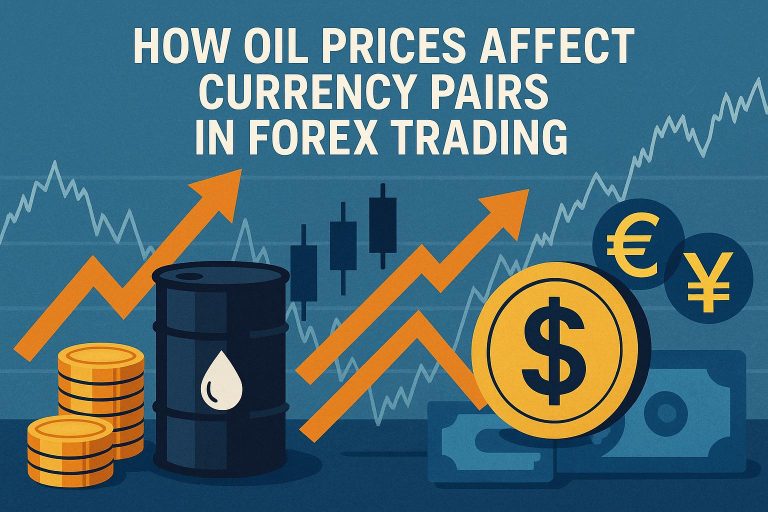The Relationship Between Oil Prices and Forex Trading
The interplay between oil prices and currency values forms a crucial segment of the global economic landscape, especially in the realm of foreign exchange (Forex) trading. This dynamic interaction is significantly influenced by the fact that oil, as a globally traded commodity, has a profound impact on the economic health of both producing and consuming nations. Understanding this relationship is crucial for Forex traders looking to make informed decisions in the complex global market.
Oil-Producing Countries and Their Currencies
For oil-exporting countries, fluctuations in oil prices often lead directly to changes in their currency values. When oil prices rise, the currencies of these nations typically appreciate due to increased revenue from oil exports, leading to a healthier trade balance. This relationship highlights the intricate link between commodity markets and currency strength and is exemplified by currencies like the Canadian dollar (CAD) and the Norwegian krone (NOK). These currencies are often referred to as “petro currencies” because of their close relationship with oil prices.
Impact on Forex Trading: Traders frequently analyze oil price trends to anticipate movements in these currencies. A consistent increase in oil prices could lead traders to invest in currencies of oil-exporting countries, expecting them to gain strength. Conversely, a drop in oil prices might discourage investment in these currencies due to potential depreciation.
Oil-Importing Countries
Conversely, countries that are major oil importers often experience adverse effects if oil prices soar. Higher oil prices lead to increased import costs, which can outbalance export revenue and strain the country’s economy. This economic strain can reflect negatively on the strength of the country’s currency, making it less attractive for Forex traders.
Example: The Japanese yen (JPY) is particularly affected by oil price changes due to Japan’s reliance on oil imports. When oil prices rise, the cost of imports increases, potentially leading to a depreciation of the yen as the country’s trade balance deteriorates. Forex traders observing these trends may adjust their trading strategies accordingly, potentially avoiding or shorting currencies of nations heavily reliant on expensive oil imports.
The U.S. Dollar and Oil
The relationship between oil prices and the U.S. dollar (USD) is unique due to the dollar’s role as the principal currency for global oil trading. Typically, when oil prices drop, the dollar strengthens, while rising oil prices can negatively affect the dollar. This inverse relationship is largely due to how oil prices influence inflationary pressures; cheaper oil leads to reduced inflation risks in oil-importing countries, bolstering their economic outlook and the value of the dollar.
Forex Trading Implications: In response to falling oil prices, traders might be inclined to purchase U.S. dollars, anticipating its strengthening. Conversely, if oil prices rise, dollar positions might be perceived as less favorable, prompting traders to reassess their Forex portfolios in reaction to the anticipated depreciation pressure on the USD.
Strategic Forex Trading Considerations
Understanding geopolitical events is critical when trading Forex in relation to oil prices. Political instability in oil-producing regions can lead to sudden changes in oil supply and, therefore, price volatility. Traders need to stay informed about geopolitical news and developments, as they can swiftly impact both oil prices and related currency pairs.
Technical Analysis and Fundamental Analysis
Effectively leveraging both technical analysis and fundamental analysis is key to making informed trading decisions. Technical analysis helps traders understand historical price movements and predict future trends. In contrast, fundamental analysis provides insights into economic indicators and political events that may affect currencies linked to oil. Together, these analytical approaches offer a comprehensive view that can enhance trading strategies in the context of fluctuating oil prices.
Conclusion
In the Forex market, oil prices are a pivotal factor that traders must consider, particularly when dealing with currencies from oil-dependent nations. The dynamic interplay between oil prices and currency values underscores the complexity and interconnectedness of the global market. By comprehensively understanding these relationships, Forex traders can devise informed and strategic trading decisions that leverage the shifting landscape of global oil prices. To delve deeper into the correlations between currency valuations and commodity prices, many financial platforms offer extensive resources for traders to explore.
The intricate dance between oil and Forex markets illustrates the necessity for traders to remain vigilant, constantly updating their knowledge of market conditions and geopolitical developments. Being acutely aware of how these factors influence currency values can provide a competitive edge in the fast-paced world of Forex trading. By maintaining a well-rounded approach that incorporates both technical and fundamental analyses, traders are better equipped to navigate the complexities presented by fluctuating oil prices and their resultant impact on global currencies.
This article was last updated on: October 9, 2025

